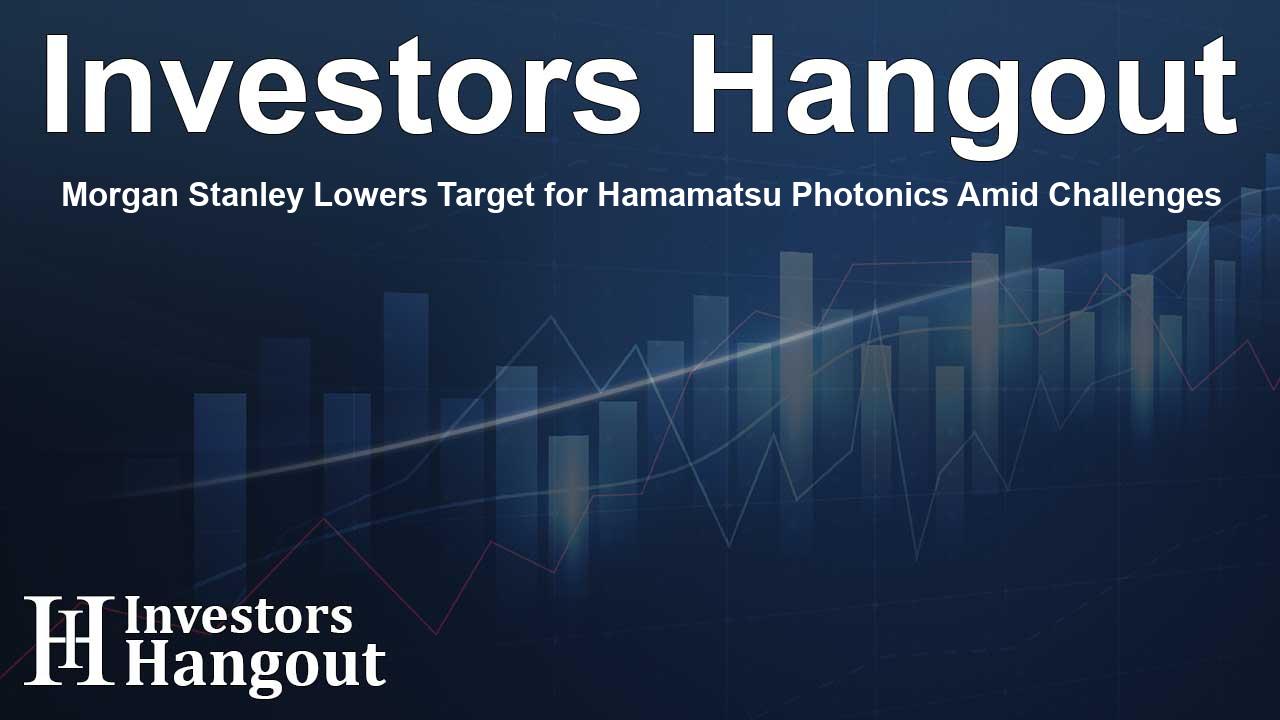Morgan Stanley Lowers Target for Hamamatsu Photonics Amid Challenges

Morgan Stanley Downgrades Hamamatsu Photonics Shares
Recently, Morgan Stanley made a significant move by downgrading shares of Hamamatsu Photonics KK (6965:JP) from an Overweight rating to Equalweight. This adjustment came with a revised price target, which decreased from ¥5,000 to ¥3,800. This decision arises from growing concerns about the company's immediate sales recovery and current inventory challenges.
Concerns Over Sales Recovery
In their latest statement, Morgan Stanley recognized the robust potential that Hamamatsu Photonics holds, especially in the realm of applied optics. Analysts pointed out the company’s promising prospects for substantial earnings growth in the medium to long term. However, they remain cautious regarding short-term performance, particularly as a complete recovery in sales across sectors such as medical, bio, and industrial equipment appears to be on a slow trajectory.
Inventory Levels Raise Alarm
Highlighting a crucial operational concern, the analyst drew attention to the substantial ¥81.7 billion inventory recorded at the close of the third quarter for the fiscal year ending September 2024. This figure translates to an alarming inventory turnover period of 316 days. Such high levels of inventory present a significant challenge that Hamamatsu Photonics must navigate effectively.
Profit Margins Under Pressure
On top of inventory issues, it has been observed that many of Hamamatsu Photonics' products boast high marginal profit margins. This situation indicates that despite efforts to lower inventory levels, the potential for profit growth may remain limited unless sales see a noticeable increase.
Implications for Investors
The downgrade, along with the revised price target, showcases Morgan Stanley's cautious outlook regarding the future performance of Hamamatsu Photonics' stock. Investors may be required to temper their expectations regarding profit growth during this challenging phase of inventory management. As the company works through these operational hurdles, the path to improved profitability may be a drawn-out process.
Frequently Asked Questions
What prompted Morgan Stanley's downgrade of Hamamatsu Photonics?
Morgan Stanley downgraded Hamamatsu Photonics due to concerns over immediate sales recovery and high inventory levels impacting short-term performance.
What is the new price target for Hamamatsu Photonics?
The revised price target set by Morgan Stanley is ¥3,800, down from the previous ¥5,000.
How does inventory affect Hamamatsu Photonics?
Hamamatsu Photonics faces challenges with ¥81.7 billion in inventory, which equates to 316 days of inventory turnover, pressing for effective management.
Are the profit margins of Hamamatsu Photonics products high?
Yes, many products from Hamamatsu Photonics have high marginal profit margins, though increased sales are necessary to drive profit growth during inventory reduction.
What should investors do in light of this downgrade?
Investors may want to adjust their expectations for profit growth and remain cautious as the company manages its inventory challenges.
About Investors Hangout
Investors Hangout is a leading online stock forum for financial discussion and learning, offering a wide range of free tools and resources. It draws in traders of all levels, who exchange market knowledge, investigate trading tactics, and keep an eye on industry developments in real time. Featuring financial articles, stock message boards, quotes, charts, company profiles, and live news updates. Through cooperative learning and a wealth of informational resources, it helps users from novices creating their first portfolios to experts honing their techniques. Join Investors Hangout today: https://investorshangout.com/
Disclaimer: The content of this article is solely for general informational purposes only; it does not represent legal, financial, or investment advice. Investors Hangout does not offer financial advice; the author is not a licensed financial advisor. Consult a qualified advisor before making any financial or investment decisions based on this article. The author's interpretation of publicly available data shapes the opinions presented here; as a result, they should not be taken as advice to purchase, sell, or hold any securities mentioned or any other investments. The author does not guarantee the accuracy, completeness, or timeliness of any material, providing it "as is." Information and market conditions may change; past performance is not indicative of future outcomes. If any of the material offered here is inaccurate, please contact us for corrections.